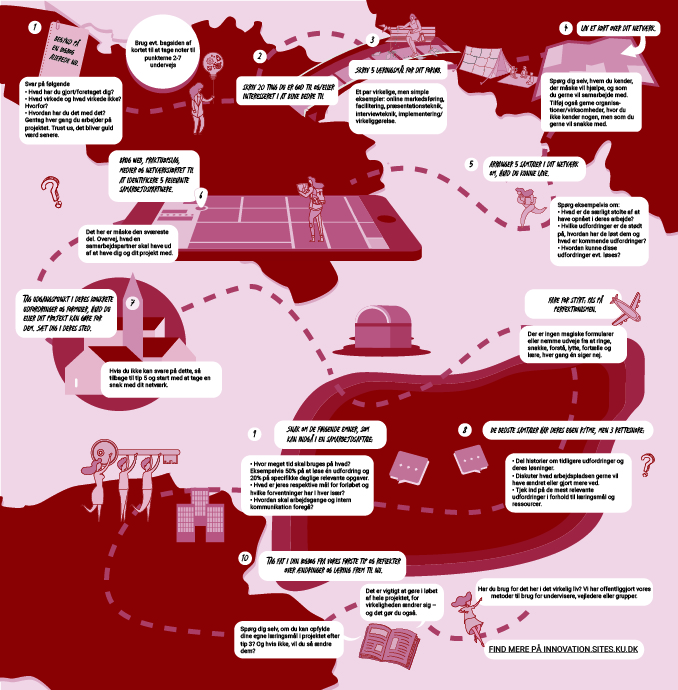In this method, participants rethink and adapt their projects to a new reality after having introduced their project to collaboration partners and others and share new experiences and challenges.
Prior to the workshop, participants must be in the process of researching collaboration partners or users and submitting applications or contacting them to talk about possible projects and ideas. Many of them should be close to entering into a collaboration agreement or perhaps already having signed such an agreement.
‘Rethink your project’ is the last of three methods that are developed in relation to a co-curriculum internship at the University targeted at supporting students in establishing innovative or entrepreneurial academic internships. However, the methods can be used to develop all kinds of projects where the content is based on a combination of academic objectives, partner collaboration(s) and effectuation theory.
ABOUT EFFECTUAL CYCLE
In effectuation thinking, interaction with other people is seen as key in the project qualification and an important success factor. The starting point may be a project idea or a wish to collaborate with someone you have met in connection with clarification of project objectives. It may be a person you have met randomly or contacted proactively. Interaction with others always involves some degree of unpredictability, which can lead to new insights or even a joint obligation to proceed. The interaction is everything from informative conversations to binding collaboration. Interaction involves the production of new knowledge – new insights – and may result in a need to adapt and/or rethink the project. This is particularly important when several parties decide to enter into a binding collaboration. This will typically lead to a significant change in the project, as there are now two (or more) to make decisions. When several parties become involved in the same project, not only are more competencies and new capacity added to it, but the objective will typically change due to the parties’ different interests. This means that the project you had in mind at the beginning will undoubtedly change in some way or other during the collaboration. The effectual cycle represents the constant rethinking of ideas, the project and your overall options.
In connection with the academic internship, it often happens that the parties need to bend towards each other’s interests. This happens for example when students make a project agreement with an external company (and partner). This is exactly what the principles of ‘Effectual Cycle’, ‘Crazy Quilt’ and ‘Lemonade’ imply, which is a crucial theoretical input to how idea generation and qualification can be controlled. Project development happens through responsiveness to other people’s good advice, interests and through negotiations.
ABOUT SARASVATHY’S PRINCIPLES FOR EFFECTUATION
Saras Sarasvathy’s theory of Effectuation (2001) describes an approach to making decisions and performing actions in entrepreneurship processes, where the next best step is identified by assessing the resources available in order to achieve the goals, while continuously balancing these goals with resources and actions.


